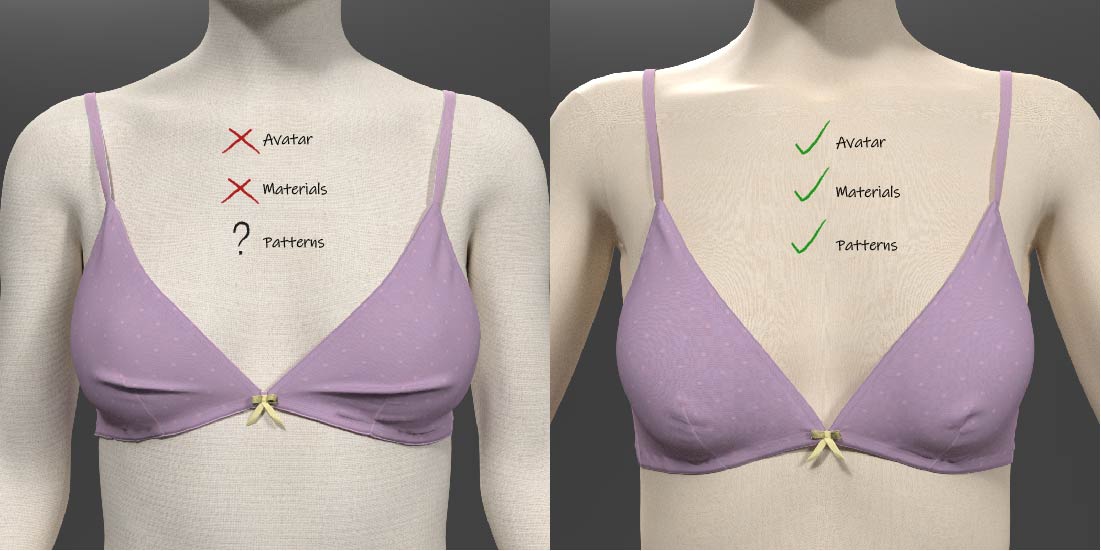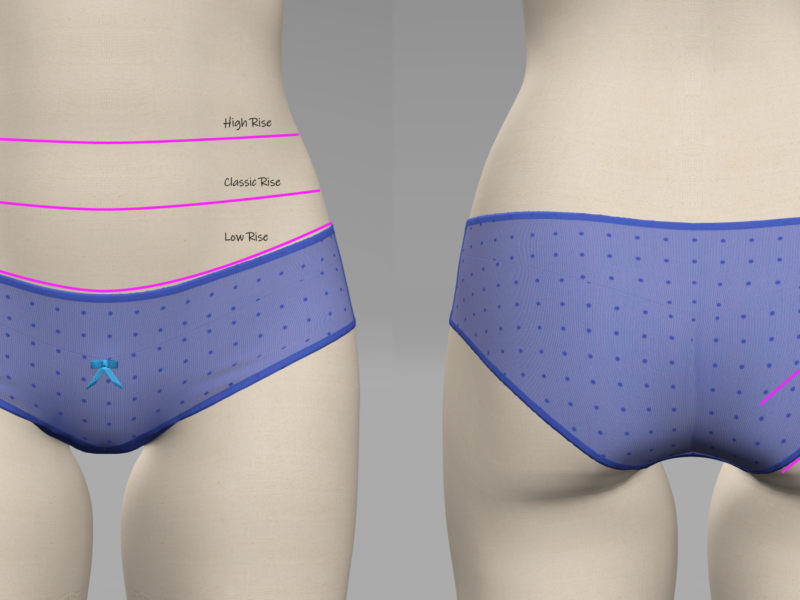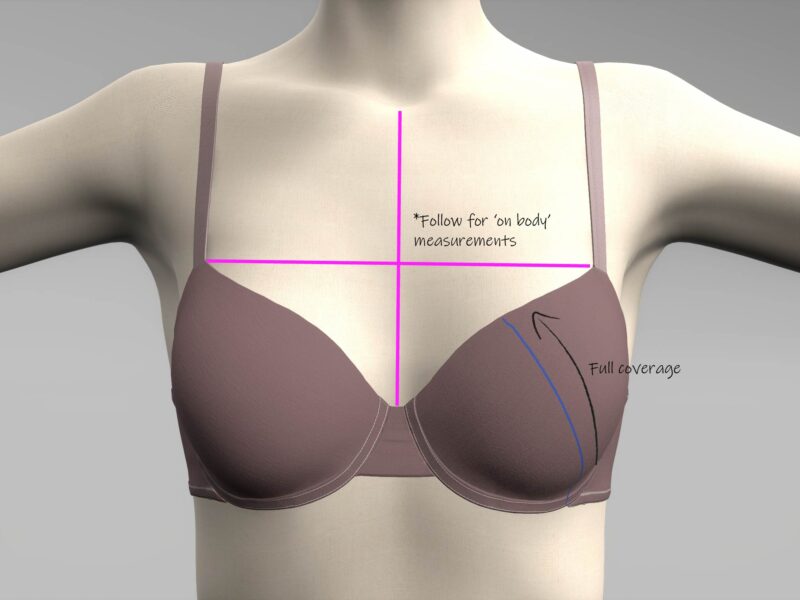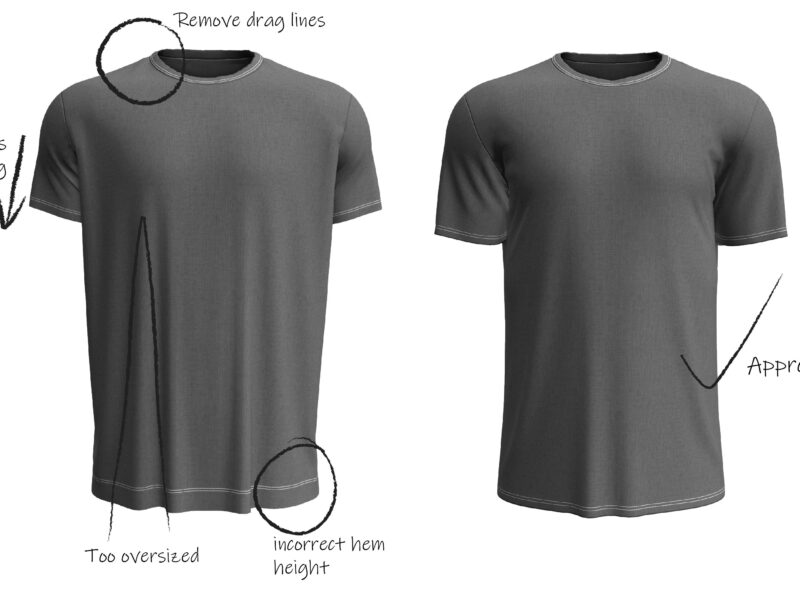Digital assets can be generated rapidly, however to fulfill real value from these products, it’s crucial to establish standards ensuring accuracy and file integrity.
Let’s explore the foundational elements of a digital fashion garment and break down what file integrity really means.
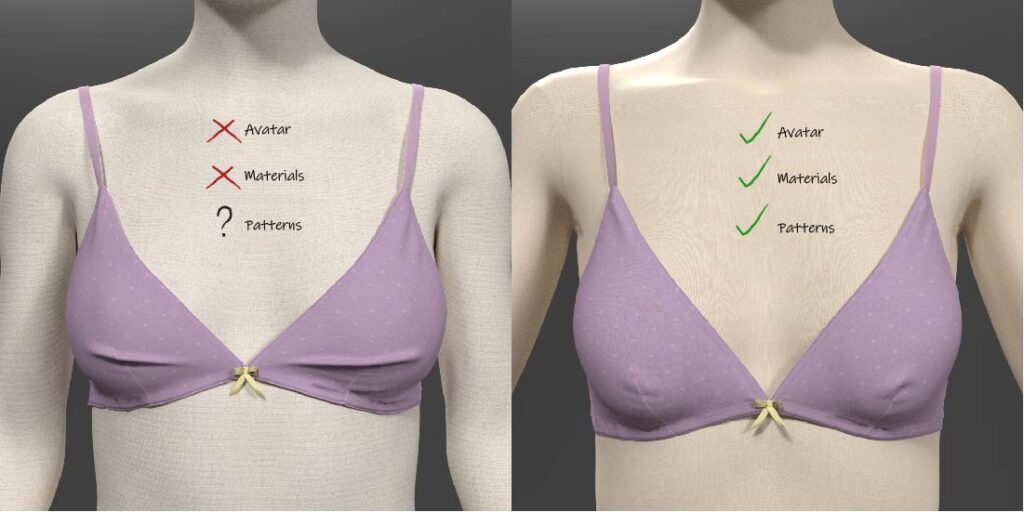
Beautiful lighting and excessive styling can make any garment look amazing, this is the same in digital fashion software. In order to make informed decisions on design and fit the flaws and imperfections need to be visible so it can be corrected.
This post is all about basic standards every digital product creator needs to ensure file integrity.
File Integrity and Quality Standards for Digital Fashion
While lighting and styling are necessary tools during garment creation designers will want a neutral view in order to make accurate assessments.
For example, if the garment appears like it is twisting in 3D software is it because it was not properly created? Or does the pattern or material need adjustments? Below are some basic standards to help foster trust with your 3D file and have confidence to make informed decisions.
Avatar, Materials, Patterns
An approved avatar, digitized materials and accurate patterns are the building blocks for a digital garment. Anyone working on the 3D file needs to trust that these 3 elements are true and correct.
- AVATAR: correct and approved avatar must be used. This will ensure the body measurements and sizing is accurate. Something else to consider is the avatar pose as this will alter how the garment drapes.
- MATERIALS: Digitized materials contain information for physics or how the material behaves once the garment is stitched and worn on the avatar. The physics properties must not be altered unless for specific exceptions such as doubling material for a 2 ply pattern. Digitized materials also contain physics based rendering information for visual effects.
- PATTERNS: Garment patterns have specific shape and measurements that affect the fit of the garment. These are the same patterns that are used for physical production and manufacturing of the garment.
Naming Conventions
When dealing with digital files, organization is key. It is crucial to align with teams on how to properly name your file and the components within the file for clear communication. In order for the file to be a true collaboration tool everyone needs to understand what file version they are working with. Following naming conventions for your avatar, materials and patterns will help establish trust and keep integrity of your file. Here is a simple list of what components should follow a naming convention:
- 3D File
- Avatar Name
- Avatar Pose
- Material Names
- Pattern Piece Naming
- Seams
- Artwork
- Snapshots or Finished Simulation
Arrange and Prepare Mode
A foundational element to creating a digital garment is how you are instructing the software to place your pattern pieces. Pieces must be centered if necessary and best not to intersect through the avatar to avoid any collision issues. How your pieces are arranged and prepared will affect how well the garment is simulated. A poor simulation may cause one to make poor decision regarding fit or design.
Arrange and prepare standards are specific to the 3D software the designer is using and also specific to the garment type. For example, in Browzwear, it may be best to arrange your pant legs on the side rather than the front and the back. This standardization is best left to the 3D Technical Designer to determine which is giving the best outcome and matches best to the physical garment.
Following these simple guidelines will be the foundational elements to creating a brand’s digital quality standards. This establishes a clear path of communication and process so teams can focus on creative collaboration while trusting the integrity of their 3D digital products.
File integrity and digital standardization establish trust with digital product creation and allow for informed confident decision making.
What digital quality standards have helped your brand succeed?

